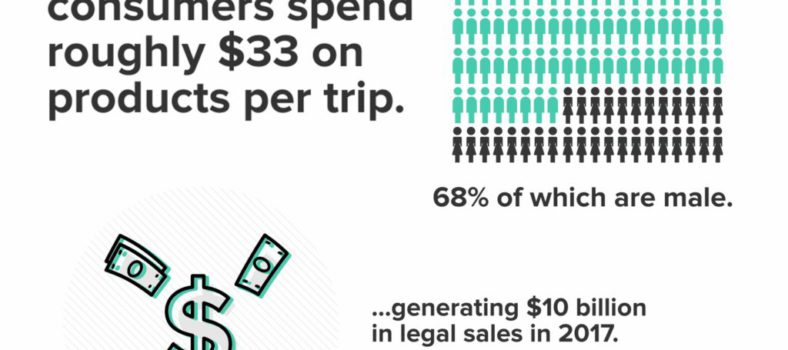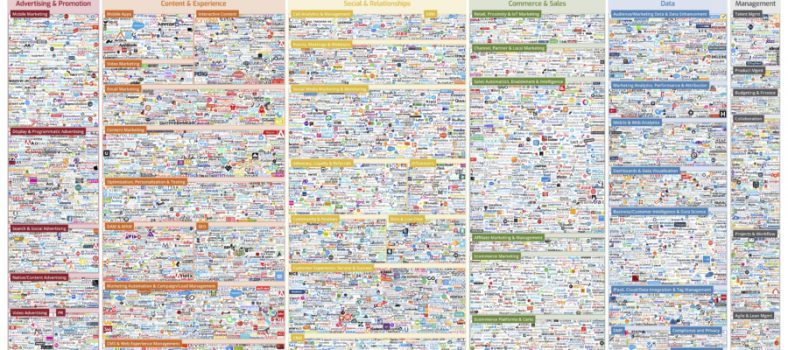DATA ANALYTICS | Social media & Big Data
Using social marketing to attract high net-worth clients
By Yvon AudetteDespite the rising popularity of social media in personal and business communications, Canadian banks, while active in some areas of social media, are not leveraging it to the same degree or effect as many consumer and retail companies. There’s a particular gap when it comes to generating sales opportunities with high net-worth clients. This can be partially explained by the regulatory climate. Banks hesitate to mount social media campaigns in the wealth and asset management space because of potential regulatory ramifications. However, while there are almost certainly restrictions to take into account, high net-worth clients represent a significant market that is not currently being tapped. It’s time to start looking beyond the barriers to see how banks can access these investors through social media and what they should bring to the conversation.
This is where big data enters the picture. We know that banks, like most businesses running on a digital infrastructure, accumulate and house masses of data. There is already a general recognition that businesses need to find better ways to leverage this information to drive business. For banks, big data may provide an “in” with high net-worth investors if they start asking themselves the right questions:
• What can we learn from our data to help us formulate social approaches?
• What specifically should we talk about?
• What products should we promote online?
• Are there opportunities to leverage technologies like crowd sourcing and crowd funding?
• How do we incorporate data consistently into our strategic approach?
• How can we use technology to make the most efficient use of data?
The fact is, banks currently use social media more as a branding tool than a targeting tool and have not embraced the idea of combining data with social media to target high net-worth investors. Canadian financial institutions that do so, however, may be opening a market rich with opportunity.
Situation and opportunity
Manage your investments
Growing influence of social media
Social media’s growing influence among high net-worth investors2
Once the connection is established and the message out, however, how do you get prospects to “come in” the door? Urging them to “drop in to the bank and talk to an advisor” is no longer the most effective approach. You have their attention—how do you close the loop and get them to begin engaging profitably in your digital space? Retaining financial clients following an inheritance scenario provides an interesting example. Just two percent of children keep their inheritances with their parents’ financial advisor.3 Rather than worry about losing clients, however, financial advisors should view this as an opportunity. Consider using the social media platforms these younger generations are comfortable working and communicating in to build fresh relationships and retain them as clients—or to attract those newly available clients fleeing what they perceive as old-school communications methods.4
The big data play—targeting in social media
Initial steps to improve social media targeting
Certainly the financial industry is excited over the rich source of customer data that social media offers. By carefully harvesting, analyzing, and leveraging social media data, banks may be able to gain valuable insight into customer investment patterns, market trends, and value propositions, to name just a few. Yet, while big data will be key to effectively targeting high net-worth and other communities, banks are finding it difficult to determine exactly what data is most valuable. While social media has expanded at an extremely rapid pace, analytical software and technologies specifically relevant to the financial services industry are struggling to keep up. At the same time, banks still face a titanic information management task with respect to internal information silos and data management.6 So whether you collect external data from social media, or try to cut your internal data to apply it to social media, it’s a challenging task in a fast-changing landscape.
Nonetheless, firms across the financial services industry have leveraged data analysis and social media to varying degrees of success by having a customized strategy, specific goals driving multi-platform initiatives, and a strong understanding of the strengths of each platform:
Corporate Insight’s Social Media Leaders Report identifies American Express’s social strategy as “embodying the greatest number of best practices as a whole” and “using more social media channels more effectively than any other firm.”7
The company launched its first online community in 2006. A year later, it launched OPEN Forum, its most successful proprietary community, which focuses on small business owners.
Financial advisor Vanguard uses Twitter to the fullest by engaging consumers, providing real-time customer service, sharing valuable content, and even hosting live-tweeting events.
Insurance company Esurance has a strong grasp of Facebook marketing campaigns, having conducted a variety of contests and campaigns to promote its products, services, and philanthropic efforts.
There are some key steps involved in initiating a social targeting strategy. If your target is high net-worth investors, data analysis should focus on identifying them, both from your own data and by collecting and analyzing social media data. Next, it’s important to collect data on what specific users are doing on your own different platforms so you can accurately tailor your client communications. For example, most people use Facebook for personal updates, which might suggest sharing information about personal products, such as household mortgages or insurance.
On the flip side, LinkedIn is a more appropriate forum for sharing business-related information.
When data can be cut to reveal this kind of client-specific information, the marketing and targeting value is clear. Consider how much you can learn just by understanding who people talk to and connect with. By analyzing this data, you can develop insights around a broad range of individuals that may be good private banking clients. Then consider who those individuals connect to and any information available about those connections. Those social network may help you define community behaviours and identify usage patterns, leading to improved channel optimization and increasingly targeted promotional capabilities. Proactively using analytics to extract this kind of granular information is becoming a competitive necessity.
It does remain important that any initiatives in this vein take the current, stringent regulatory environment into account. Banks work hard to enhance their customer commitment, but balancing stricter regulatory protections for consumers always enters into the picture. Once you understand the regulatory, legislative and privacy boundaries, you can begin to use your data to more effectively optimize customer relations and augment your existing marketing structure with social media.
Digital synergy
One barrier to banks developing a strong social strategy is that while they have plenty of data on hand, they do not always have the technology to leverage that data in ways that drive business. The first step in transforming your retail approach is to think “digital first.” How can you optimize and enhance your services and operations to leverage your wealth of legacy information? You need the technology in place to analyze, cut, and apply that information in ways that drive the targeting process. This is a major paradigm shift, as “digital first” thinking can lead to some very sophisticated technological requirements, but having the infrastructure in place to leverage big data has been a successful approach for some financial institutions.
Social media will continue to drive opportunity
With over 90 percent of high net-worth investors participating in social media in some form, an integrated social media marketing strategy is necessary—not only to get results, but simply to remain relevant in today’s highly competitive financial services markets. Social media reaches a wide breadth of individuals overall and high net-worth investors in particular, but it can also improve brand perceptions. Research suggests that 28 percent of all high net-worth investors would perceive a financial company as “innovative,” “a leader in the industry,” or “on the cutting edge” if they offered social media tools delivered through the appropriate social platforms (that is, business-oriented platforms rather than sites focused on personal interaction where aggressive financial marketing may seem intrusive). It seems increasingly clear that the advantages of social media targeting can be ignored only at banks’ own risk. That means acting now to not only develop data-based strategies, but to implement the technologies required to put those strategies into action.
Yvon Audette is Partner, Advisory Services, National Service Line Leader, IT Advisory at KPMG.
1 Corporate Insight. Social Trends in Wealth Management. Accessed at http://www.corporateinsight.com/attachments/1838_Alan%20Maginn%20BDI%20Presentation%20-%20Social%20Trends%20in%20Wealth%20Management.pdf on April 13, 2014.
2 LinkedIn; Cogent Research. Social Media’s Growing Influence Among High-net-worth Investors: Using social media to reach affluent investors and strengthen your brand. Accessed at http://marketing.linkedin.com/sites/default/files/pdfs/LinkedIn_HNWInvestorResearch_2012.pdf on April 10, 2014.
3 Diane Doolin, Vic Preisser, and Roy Williams. “Engaging and Retaining Families.” Accesses at http://www.imca.org/sites/default/files/file_2288.pdf on April 14, 2014.
4 Lauren Foster. “Why Financial Advisers Need to Use Social Media.” Accessed at https://blogs.cfainstitute.org/investor/2014/02/05/why-financial-advisers-need-to-use-social-media/ on April 14, 2014.
6 Jason Maynard, Wells Fargo research analyst. “Social FSI: What Social Mean to the Finance Industry.” Hootsuite Enterprise Webinar. Accessed at http://socialbusiness.hootsuite.com/thank-you-webinar-social-fsi.html?aliId=71279972 on April 14, 2014.
7 Corporate Insight. Social Media Leaders. Accessed at http://info.corporateinsight.com/corporate-insight-social-media-leaders-preview/ on April 14, 2014.





No Comment